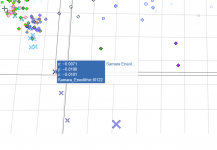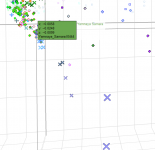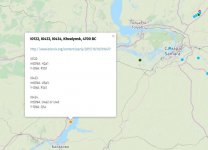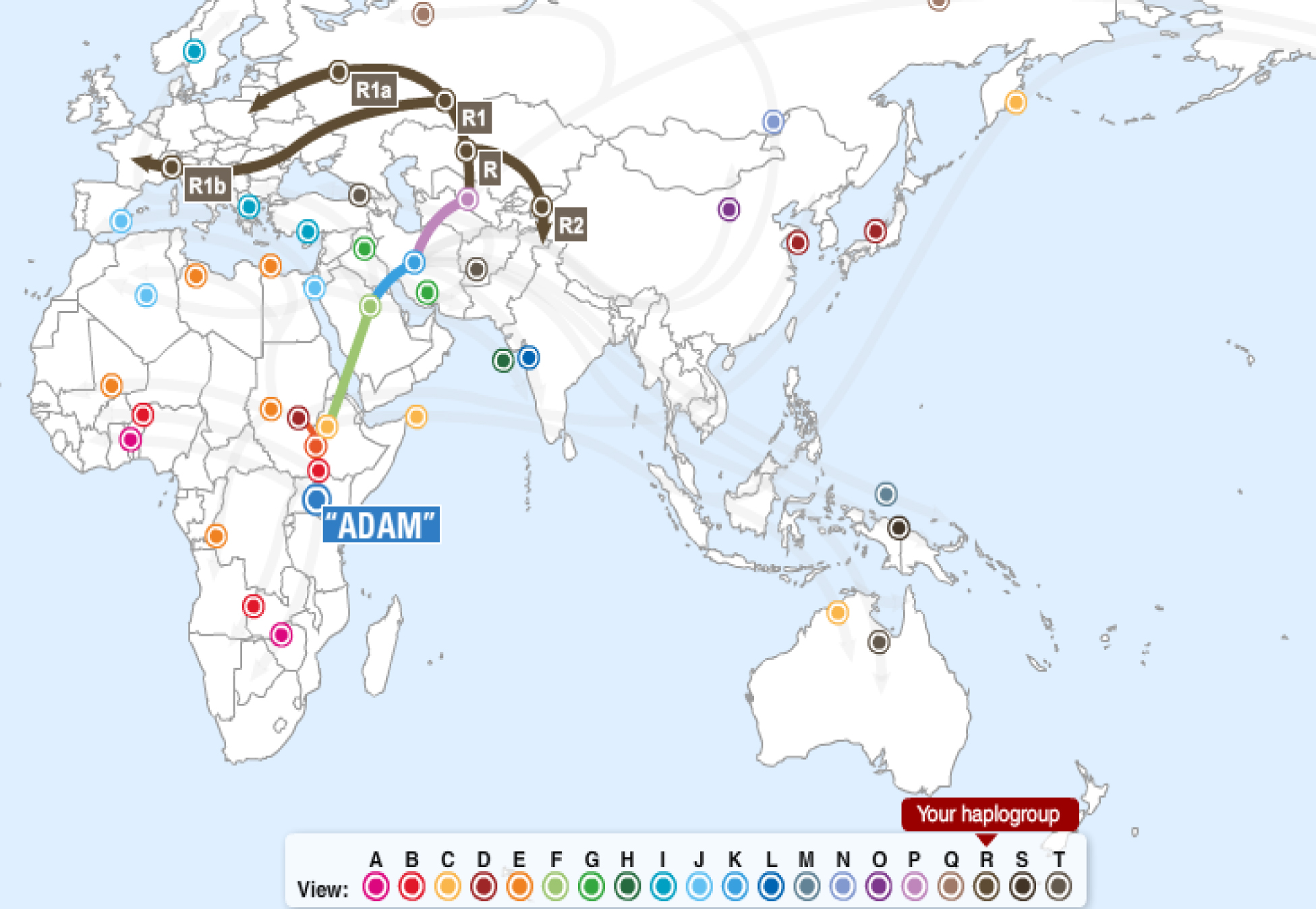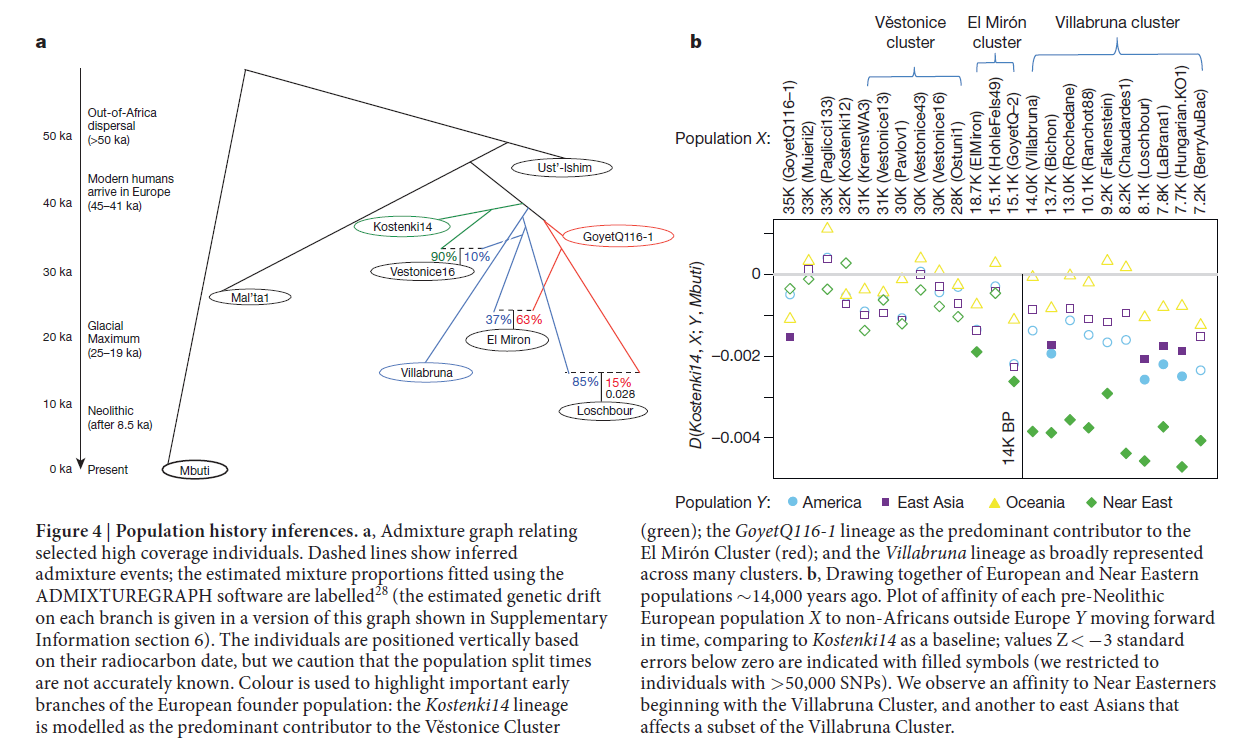The map and chart above is from
The genetic history of Ice Age Europe, a new paper in
Nature from the Reich lab (the
new data has been posted). It illustrates probably the major finding of the paper, using a ~40,000 year paleogenetic transect of 51 ancient DNA samples the authors conclude that there have been at least three major population turnovers/disruptions across Pleistocene Europe. These correspond to three genetic clusters that they’ve identified in their data; the El Mirón, Věstonice, and Villabruna groups. Respectively they are the Magdalenian, Gravettian, and Epigravettian/Azilian cultures. There are also stray individuals which are harder to place, but signal other turnovers. An individual from Goyet that dates to 37,000 years ago and was presumably of the Aurignacian culture, and is somewhat
sui generis. But, unlike the ~40,000 year old
sample from Romania, and the ~45,000 year old
Siberian, Goyet is ancestral to some later Europeans.

The figure to the left is
one interpretation of their results. It shows that the Goyet sample contributed substantial ancestry to the Magdalenian culture which flourished nearly 20,000 years later. But, Goyet did not contribute substantial ancestry to the Gravettian culture, which succeeded it! Rather, the Vestonice cluster which represents the Gravettians has only marginal admixture from other Pleistocene Europeans, but a notable affinity to the
Konsteki sample. Intriguingly, Goyet-like ancestry can be found in the
Loschbour hunter-gatherer from the Holocene.
This suggests that I was wrong in one of my predictions: I had assumed that most European hunter-gatherer ancestry dates to the Gravettian at the earliest. This is wrong. In fact, this paper suggests minimal legacy of Gravettian peoples as represented by the Vestonice cluster. Rather, earlier peoples have left their mark on modern Europeans via the Holocene “Western Hunter-Gatherers” (WHG) who mixed with incoming farmers.
There’s more. Most of Loschbour’s ancestry is not from Goyet-like groups. Rather, it is from a population with affinities to the Villabruna culture. This to some extent vindicates another prediction I made:
that most European hunter-gatherer ancestry would probably date to groups which became established after the Last Glacial Maximum 20,000 years ago. That was right, as Villabruna-like affinity seems to be the dominant signal in the Mesolithic hunter-gatherers.
Some of the patterns above are perplexing. So at this point, I think I want to drop a conjecture which I think can be inferred from this paper, but probably will have to be explored with future results and analysis:
the Villabruna cluster ~14,000 years is a product of a massive expansion of a hunter-gatherer population from the Middle East. The original papers which posited that “Early European Farmers” (EEF) were admixtures between “Basal Eurasians” (BEu) and WHG, at 40% to 60% proportions, were somewhat misleading I suspect. Rather, WHG, the Mesolithic hunter-gatherers of Europe, derive predominantly from an expansion of Middle Eastern hunter-gatherers which had larger populations in the wake of the grueling climatic regime of the Last Glacial Maximum.
The WHG in EEF was not European hunter-gatherer at all, but local Middle Eastern hunter-gatherer.
The further affinities of Villabruna make a likely exotic origin obvious. As noted in the paper a Near Eastern, but not BEu, affinity of European hunter-gatherers emerges specifically with Villabruna, ~14,000 years ago.
And, some individuals in this cluster likely exhibit admixture from a population related to modern East Asians. This gene flow is independent of the Middle Eastern gene flow, though I suspect that the Middle Eastern gene flow is simply an expansion of hunter-gatherers from that region, with some absorption of the local substrate. There are other explanations for why this affinity might exist (read the supplements), but other papers have indicated the possibility of this relationship, so it is probably the most likely. The Middle Eastern origin of Villabruna makes more sense of the relationship between it and “Caucasus Hunter-Gatherers” (CHG). Geographically they would have been positioned near each other.
These West Eurasian clusters form a very deep clade with the Ma’lta North Eurasian population as an outgroup, with these nested together with East Eurasians, Amerindians, and Oceanians, in comparison to BEu. But if you take a look at the tree, and consider the chronology,
it seems that modern Eurasians diversified into several distinct lineages over the course of 5-10 thousand years after the Out of Africa event. Individuals on the ~40,000 year time limit are no more related to all Eurasian groups, perhaps because their lineage went extinct. Ma’lta and the North Eurasians seem to have diverged from other West Eurasians very soon after these two diverged from East Eurasians; there just isn’t that much time to allow for this, but it did happen.
By about 30,000 years ago many of the pieces were in place. Much of the demographic change we see subsequent involve a set of operations to mix and match basic elements. The patchiness and segregation of these populations is probably why ancient DNA, itself spotty and poor and seeing the landscape with precision, assigns
all of Europe to a particular cluster at a particular time. There were clearly other peoples, but they are not always at accessible archaeological sights, or perhaps they had retreated into the forests as a marginal folk?
There are many other interesting aspects of this paper, such as the Neanderthal admixture. But I’ll save that for another day….



